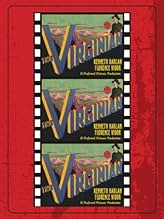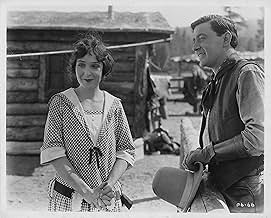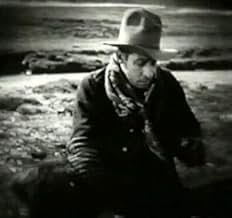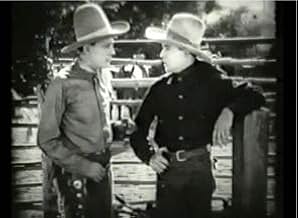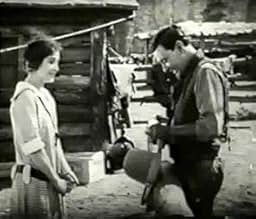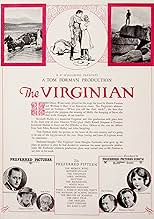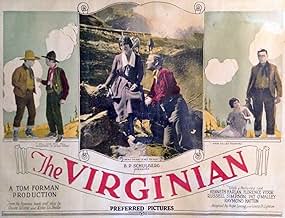The man-who-has-to-prove-himself-because-it's-the-honorable-thing-to-do in films possibly begins with the novel The Virginian by Owen Wister. First made in 1914 with Dustin Farnum essaying the part of the Virginian, and directed by Cecil B. DeMille - heavy set Farnum nevertheless played the part with aplomb. The 1929 version - the first sound version - had skinny, all-bone, but lean and mean Gary Cooper play the same part, and he probably made the best Virginian ever on film. He was superb! Many versions have come since. They should have, too. Even though the book has worn a tad since it was written, it's a great story, and if it's filmed well, makes a super movie. Between the '14 and '29 versions another version was made, "The Virginian" (1923). Trampas was played by none other than great character actor Russell Simpson, and he's surprisingly good. Possibly better than William Elmer who'd played the part in '14; though, no, never as good as Walter Huston who played the part in '29 as if he owned it! But who played the Virginian in the '23 version? Kenneth Harlan. He was handsome. He was masculine. All man's man. BUT...the guy looked as if he were a New York newspaperman who wore a suit at all times. Yes, he could sit a horse. Not like the "B" Western guys, though. Mounts like he needs to seek the stirrup so he doesn't slip. No, this guy sits the New York City subway at Atlantic Avenue/Barclays Center like a cop watching for a crime - not a horse. He's no Virginian. In fact, Harlan, a decent actor if bland, was a Bostonian. He needed to play one. He just didn't fit the Western at all. Too bad, too, because the film is well directed and beautifully filmed, a decent - but that's all - actioner. Even Florence Vidor as the school marm seemed a bit too East Coastish for the girl who goes from the East to the West - just like she should have, but she was in 1923, not in 1874, as she should have been. This is an okay film up to a point. The point, though, is the breaking point. This one is a miss except for Russell Simpson and the photography. Even the photography isn't up to the '29 version, though. That '29 version captures the essence of the book and Westerns as they portray the psychology of Americana in the 10's, 20's, and 30's to a Model T! The Blu-Ray from Grapevine is a nice print.

